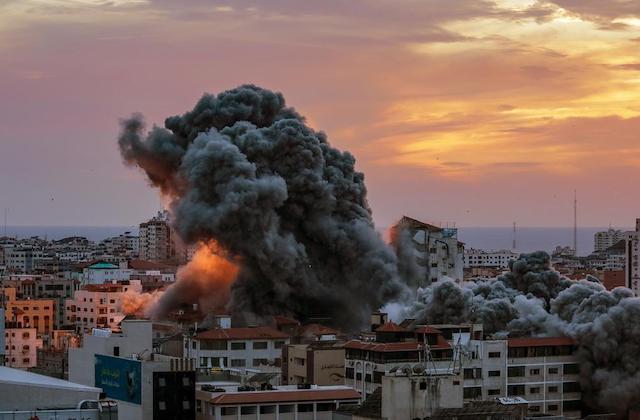Gregor MA Hirt (Global CIO Multi Asset Allianz GI) | A sudden flare-up in violence between Israel and Hamas has left more than 1,500 people dead and re-ignitedthe longest-running conflict in the Middle East. The resulting geopolitical uncertainty may spark higher oil prices.
Palestinian Islamist group Hamas on 7 October launched the largest military assault on Israel in decades, killing hundreds of Israelis and sparking retaliatory air strikes on Gaza that have also killed hundreds of people. This conflict represents a significant human tragedy; we also recognise that investors may want our perspective on how these unfolding events might affect markets.
For markets, the most immediate impact of the conflict so far has been on oil prices. Brent crude, the international oil benchmark, rose 5% to as high as USD 89 a barrel over concerns of another extended period of high prices that could further fuel inflation.
But in the nearer term, we think investors will continue to focus on the path of interest rates and economic growth as the global economy rebalances after an era of cheap money.
Still, with Israeli Prime Minister Benjamin Netanyahu saying the country was now facing a “long and difficult war”, the conflict’s implications for geopolitics and assets may take longer to play out.
Oil in focus
Geopolitical flashpoints, particularly in the Middle East, usually cause a rise in oil prices and this time is no different. So far, the conflict has not immediately threatened oil supply but any involvement of Iran in the conflict would pose a risk of further escalation. In 2022, Iran produced 4% and the Middle East about one third of global oil, respectively.1 Currently, Iran says it wasn’t involved in the Hamas attack, but it remains a key backer of the group.
Supply cuts by OPEC+2 major producers Saudi Arabia and Russia pushed prices above USD 95 a barrel in September, before falling as worries about the global economy grew. We don’t see Saudi Arabia and Russia changing course on production cuts with the outbreak of hostilities and we think seasonal oil demand will be less supportive than during the summer.
If oil prices remain high – or increase further – as conflict escalates, global inflationary pressures may be exacerbated. In that scenario, central banks may have to rethink their monetary policy paths. That could increase the likelihood of interest rates in major economies such as the US and Europe remaining higher for longer. It could also increase the risk of economic growth slowing down even further. In that scenario Europe would be particularly vulnerable given its high dependence on imported energy.
Such a scenario could have implications for other assets such as equities and fixed income.
Geopolitical fault lines redrawn
In the past, conflicts between Hamas and Israel have had only a limited impact on global economic growth and markets outside of commodities. We don’t think this time will be significantly different unless there is a major escalation in the crisis – for example, if Iran becomes involved. In terms of the economic outlook, our base case remains a recession in both Europe and the US. But we think that will be engineered by the ramp-up in central bank interest rates to tight levels, rather than by external shocks.
In the longer-term, the conflict may re-orientate geopolitical fault lines and harden old alliances. Global focus may shift away from Russia’s war against Ukraine. In the US, both Republicans and Democrats are very supportive of Israel in times
of crisis and the conflict may loom large in the campaign trail ahead of next year’s US election. The US has
provided more than USD 44.5 billion in security assistance to Ukraine since the start of the country’s war with Russia in 2021.3 Israel’s needs for funding may now take priority. The conflict also raises questions about the recent forging of new alliances in the Middle East. With the tacit backing of the US, Saudi Arabia and other Arab states have opened diplomatic relations with Israel in recent years in a move to check Iran’s influence in the region. That rapprochement may now be in doubt – carrying a potential impact for oil prices.
Safe havens may emerge
In an environment of increased geopolitical uncertainty, safe havens may perform well. That may help support gold prices, which have been on a downward path in recent months as investors have sought out other assets such as US Treasuries and the dollar. We continue to remain overweight gold, believing it could provide good hedging potential as a safe haven despite a strengthening US dollar and high real yield. The Swiss Franc may also regain its status as a refuge in times of market stress.
Overall, we think investors should continue to keep their focus on the health of the global economy, while keeping an eye on the Middle East in case tensions escalate further.
- 1 Data source: U.S. Energy Information Administration, International Energy Statistics, Total oil (petroleum and other liquids) production, as of September 22, 2023
- 2 The Organisation of the Petroleum Exporting Countries (OPEC) and its allies, including Russia, are known as OPEC+
- 3 Data source: US Department of State





